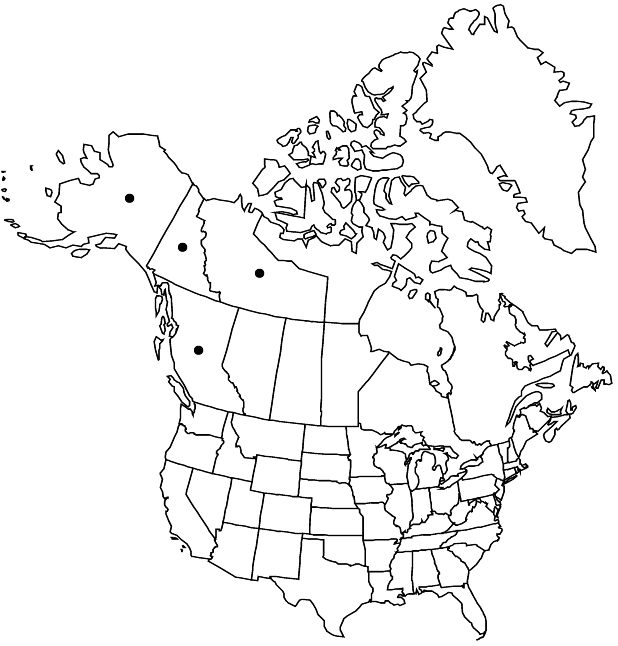Micranthes reflexa
in N. L. Britton et al., N. Amer. Fl. 22: 146. 1905,.
Plants solitary or tufted, with bulbils on caudices. Leaves basal; petiole broadly flattened, 1–2 cm; blade elliptic to broadly ovate, 1–3 cm, fleshy, base attenuate, margins shallowly serrate (teeth to 1 mm), densely ciliate, surfaces tangled reddish brown-hairy. Inflorescences 15+-flowered thyrses with flowers crowded at branch tips, 7–60 cm, ± hairy, also with some purple-tipped glandular hairs. Flowers: sepals reflexed, ovate to triangular; petals white, with 2 basal yellow spots (spots distinct even in dried material), elliptic to spatulate, clawed, 2–4 mm, longer than sepals; filaments strongly club-shaped, (longer than petals); pistils distinct almost to base; ovary superior, (to 1/3 adnate to hypanthium). Capsules green to purplish, folliclelike. 2n = 20, 40.
Phenology: Flowering late spring–summer.
Habitat: Heath, tundra, dry to mesic meadows, alpine gravelly slopes and fellfields, open woods
Elevation: 0-1800 m
Distribution

B.C., N.W.T., Yukon, Alaska.
Discussion
Micranthes idahoensis, M. marshallii, and M. reflexa form a morphological complex of ecologically and geographically distinct entities in western North America that is much in need of study. The eastern North American M. careyana and M. caroliniana are also morphologically similar to the members of this complex.
Selected References
None.